| Oriole | |
|---|---|
 | |
| Curtiss Oriole at Houston, 1919 | |
| Role | Light aircraft |
| National origin | United States |
| Manufacturer | Curtiss Aircraft |
| First flight | 1919 |
The Curtiss Oriole (Curtiss Model 17) was an American three-seat general-purpose biplane.
| Oriole | |
|---|---|
 | |
| Curtiss Oriole at Houston, 1919 | |
| Role | Light aircraft |
| National origin | United States |
| Manufacturer | Curtiss Aircraft |
| First flight | 1919 |
The Curtiss Oriole (Curtiss Model 17) was an American three-seat general-purpose biplane.
The Oriole fuselage was constructed using laminated wood to form a monocoque body and was powered by either the Curtiss OX-5 V-8 or the Curtiss K-6 engine. The aircraft featured a self-starter and a tall thin radiator in the pilot's field of view. [1] [2]
Surplus Curtiss Oriole wings were sold to Harold Pitcairn to manufacture the first production Pitcairn aircraft, the Pitcairn PA-3 Orowing.
Northwest Airlines was founded on August 1, 1926, flying a Curtiss Oriole and a Thomas Morse Biplane on the CAM-9 Airmail route from Minneapolis to Chicago. [3]
Admiral Byrd selected a Curtiss Oriole as second aircraft for his 1926 Arctic Expedition to the North Pole with a Fokker F.VII. The Oriole was planned to be used for photography and rescue work. The New York times reported (falsely) that the Oriole was shipped on the steamer Chantier in case the Fokker was unavailable. [4] However the Oriole never was planned as a backup to the Fokker. It did not have the range to fly nonstop from Spitzbergen to the North Pole and back.
A leased Curtiss Oriole was deployed by the 109th Observation Squadron in 1921. The aircraft was flown to Washington D.C. to lobby for Minnesota Air Guard funding. [5]
One Curtiss Oriole were sold to Brazilian Naval Aviation in 1926.
Syd (brother of Charlie) Chaplin Air Line used Curtiss Oriole(s) for its one year of operation in 1920.
Igor Sikorsky offered a kit to replace the lower wings with a smaller pair with less drag-producing struts and wires. One example with this modification and a 150 hp Hispano-Suiza upgrade, was entered in the 1927 National Air Races. Before the races, the engine was upgraded again to a Hispano-Suiza 220 hp engine, which overwhelmed the cooling system with metal shavings, causing the aircraft to drop out of the race. [6]
The Ireland Comet was a rebuilt Curtiss Oriole with new flying surfaces, including a single-bay high-lift wing. [7]

Data from Curtiss Aircraft 1907–1947 [11]
General characteristics
Performance
{{cite journal}}: Missing or empty |title= (help){{cite journal}}: Missing or empty |title= (help)
The Curtiss JN "Jenny" was a series of biplanes built by the Curtiss Aeroplane Company of Hammondsport, New York, later the Curtiss Aeroplane and Motor Company. Although the Curtiss JN series was originally produced as a training aircraft for the US Army, the "Jenny" continued after World War I as a civilian aircraft, as it became the "backbone of American postwar [civil] aviation".

The Curtiss OX-5 was an early V-8 American liquid-cooled aircraft engine built by Curtiss. It was the first American-designed aircraft engine to enter mass production, although it was considered obsolete when it did so in 1917. It nevertheless found widespread use on a number of aircraft, perhaps the most famous being the JN-4 "Jenny". Some 12,600 units were built through early 1919. The wide availability of the engine in the surplus market made it common until the 1930s, although it was considered unreliable for most of its service life.

The Boeing Model 15 was a United States single-seat open-cockpit biplane fighter aircraft of the 1920s, manufactured by the Boeing company. The Model 15 saw service with the United States Army Air Service and with the United States Navy as a carrier-based fighter.

The Naval Aircraft Factory TS-1 was an early biplane fighter aircraft of the United States Navy, serving from 1922 to 1929.

The Curtiss Model N was a military trainer used primarily by the United States Navy during World War I.

The Wright R-975 Whirlwind was a series of nine-cylinder air-cooled radial aircraft engines built by the Wright Aeronautical division of Curtiss-Wright. These engines had a displacement of about 975 cu in (15.98 L) and power ratings of 300–450 hp (220–340 kW). They were the largest members of the Wright Whirlwind engine family to be produced commercially, and they were also the most numerous.

The Consolidated PT-1 Trusty was a biplane primary trainer used by the United States Army Air Service (USAAS).
The Letov Š-16 was a Czechoslovak single-engined, two-seat biplane bomber. It was designed by Alois Šmolík at Letov Kbely. The Š-16 first flew in 1926.

The Fokker C.I was a German reconnaissance biplane under development at the end of World War I. The design was essentially an enlarged Fokker D.VII fighter with two seats and a 138 kW (185 hp) BMW IIIa engine. The C.I was originally developed to sell to the German Army. It never saw service in World War I, but Anthony Fokker managed to smuggle parts out of Germany at the time of the Armistice.
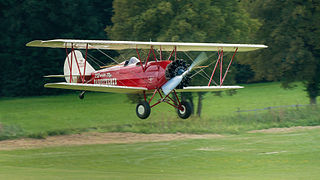
The Travel Air 2000/3000/4000 (originally, the Model A, Model B and Model BH were open-cockpit biplane aircraft produced in the United States in the late 1920s by the Travel Air Manufacturing Company. During the period from 1924–1929, Travel Air produced more aircraft than any other American manufacturer, including over 1,000 biplanes. While an exact number is almost impossible to ascertain due to the number of conversions and rebuilds, some estimates for Travel Air as a whole range from 1,200 to nearly 2,000 aircraft.
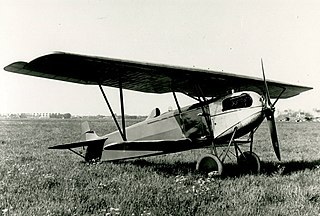
The Fokker D.XI was a 1920s Dutch single-seat fighter designed and built by Fokker
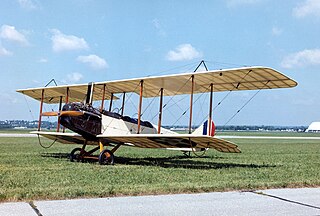
The Standard J is a two-seat basic trainer two-bay biplane produced in the United States from 1916 to 1918, powered by a four-cylinder inline Hall-Scott A-7a engine. It was constructed from wood with wire bracing and fabric covering. The J-1 was built as a stopgap to supplement the Curtiss JN-4 in production.
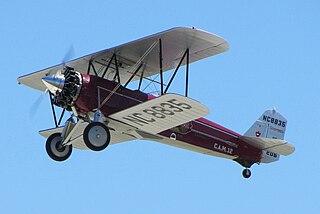
The Stearman C3 was an American-built civil biplane aircraft of the 1920s, designed by Stearman Aircraft of Wichita, Kansas. It was also the first Stearman aircraft to receive a type certificate.
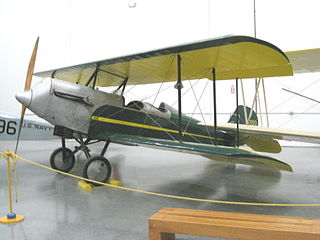
The American A-1 and A-101 were American two and three-seat biplanes of the 1920s.

The American Eagle A-129 was an American biplane first flown in 1929.

The Waco 10/GXE/Waco O series was a range of three-seat open-cockpit biplanes built by the Advance Aircraft Company, later the Waco Aircraft Company.

The Swallow Airplane Swallow is an American-built general purpose biplane of the mid- to late 1920s.

The Pitcairn PA-3 Orowing is an early Pitcairn biplane designed for light commercial use in the early 1920s when aircraft production rates did not meet demand for airmail, training, and passenger aircraft.
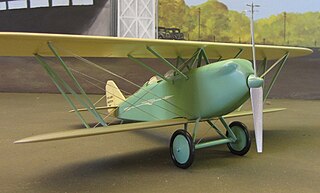
The Pitcairn PA-2 Sesquiwing "Arrow" is an early biplane designed for air racing and commercial airmail service.
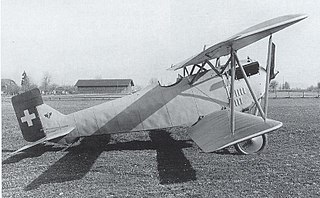
The Militär-Apparat MA-7, also known as the Häfeli MA-7 and K & W MA-7, was a prototype fighter designed by August Häfeli in Switzerland. It flew in two different engine configurations, neither of which were deemed satisfactory and so the type did not enter series production. However, it did achieve a Swiss record for flying at an altitude of 9,800 metres above sea level in 1926.